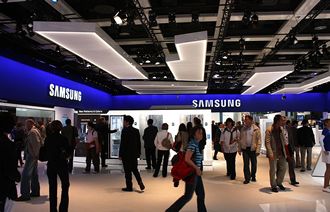 The top five vendors leading the smartphone race all saw growth in the third quarter, according to numbers crunched by analyst outfit Gartner.
The top five vendors leading the smartphone race all saw growth in the third quarter, according to numbers crunched by analyst outfit Gartner.
Global sales hit 383.4 million units for the quarter, which represents a three percent increase over third quarter 2016’s 372.2 million. North America sales grew 11.2 percent, Big G said.
North America was the third largest region for smartphone sales in the quarter (topped by Greater China and Emerging APAC, respectively), representing 12.4 percent of the market and selling 47.5 million smartphones, compared to 42.7 million in third quarter 2016.
Worldwide, Samsung led the quarter with 22.3 percent market share and 85.6 million units shipped. With 71.7 million units shipped in third quarter 2016, Gartner noted Samsung smartphone sales grew 19.3 percent for the quarter.
Gartner research director Anshul Gupta said: “Renewed pushes of the newly designed Galaxy S8, S8+ and Note8 smartphones have brought back growing demand for Samsung smartphones, which helped it compete against Chinese manufacturers and deliver a solid performance in the quarter. The Last time Samsung achieved a double-digit growth was in fourth quarter 2015.”
Apple controlled 11.9 percent market share and shipped 45.4 million units, compared to 43 million in third quarter 2016.
“The arrival of Apple’s new flagship iPhones at the end of the third quarter 2017 has delayed smartphone purchases into fourth quarter 2017. Following compelling offers on Black Friday and Cyber Monday, the holiday season will likely boost sales of smartphones before the end of the year. We estimate fourth quarter ‘s smartphone sales will boost total sales for the full year. We expect smartphone sales will reach 1.57 billion units in 2017.”
Huawei rounded out the top three with 9.5 percent market share. The Shenzhen, China firm shipped 36.5 million units for the quarter, compared to third quarter 2016’s 32.5 million.
Dongguan followed Huawei, China-headquartered firm OPPO, which earned 7.7 percent market share by shipping 29.4 million units (versus third quarter 2016’s 24.6 million), and then Xiaomi, which had seven percent market share and shipped 26.9 million smartphones (versus third quarter 2016’s 14.9 million)
Gartner also noted increased customer demand for “high-priced” smartphones, with North America and Western Europe’s market growth being attributed to such purchases.



















